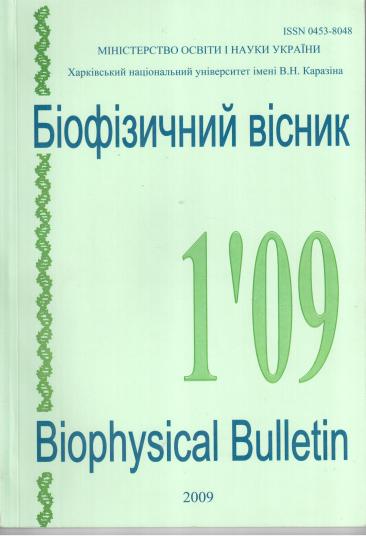Mass spectrometric study of intermolecular interactions between the artemisinin-type agents and nucleobases
Abstract
Artemisinin-type agents are well known as effective antimalarial medicines and recently their anticancer activity was reported, however, there is a lack of investigations on the molecular mechanisms of antitumor activity of artemisinin and its derivatives. This study is aimed at examining the mechanisms of artemisinin-type agents' anticancer activity. DNA as the carrier of genetic information is one of the major targets for antitumor drug effect and nucleic acids are also suggested as molecular targets of artemisinin action in cancer cells. Biologically significant intermolecular interactions of artemisinin and dihydroartemisinin with some purine and pyrimidine nucleobases were studied by means of testing the drug-nitrogen base mixtures by electrospray ionization mass spectrometry. The peaks of stable noncovalent complexes of the artemisinin-type drug with Ade, Cyt, and mThy were registered in the mass spectra. Comparison of the relative abundances of the peaks of the drug-nucleobase complexes for purine and pyrimidine nitrogen bases was performed. The spectra analysis allowed us to conclude that an effect of the complexation process depends on the structural peculiarities of the drugs and nucleobase molecules. The experimental data and features of the molecular structure of the drugs and nucleobases testify to the suggestion that noncovalent complexes of the artemisinin-type agents and nitrogen bases are stabilized by van der Waals forces and hydrogen bonds between the functional groups of the interacting molecules. Formation of the supramolecular complexes of the artemisinin-type drugs and nucleobases is considered as a possible molecular mechanism of anticancer activity of the studied antimalarial agents. The obtained results demonstrate the great potential of the electrospray ionization mass spectrometry method in the study of the artemisinin-type agents and their intermolecular interactions related to the mechanisms of the drug's biological activity.
Downloads
References
Jansen F. Artesunate and Artemether. Towards the Eradication of Malaria? Dafra Pharma Ltd: Oud-Turnhout.
, 63 p.
Benoit-Vical F., Robert A., Meunier B. // Antimicrob. Agents Chemother. 2000 . V.44. P. 2836-2841.
Olliaro P., Haynes R., Meunier B., Yuthavong Y. // Trends Parasitol. 2001. V. 17. P. 122-126.
Meshnick S., Taylor T., Kamchonwongpaisan S. // Microbiol. Rev. 1996. V. 60. P. 301-315.
Robert A., Coppel Y., Meunier B. // J. Chem. Soc. Chem. Commun. 2002. P. 414-415.
Wang D.-Y., Wu Y.-L., Liang J., Li Y. // J. Chem. Soc. Perkin Trans. 2002. P. 65-69.
Eckstein-Ludwig U., Webb R., Van Goethem I., East J., Lee A., Kimura M., O’Neill P., Bray P., Ward S.,
Krishna S. // Nature. 2003. V. 424. P. 957-961.
Pashynska V., Van den Heuvel H., Claeys M., Kosevich M. // J. Am. Soc. Mass Spectrom. 2004. V.15. P.
-1190.
Lai H., Singh N. // Cancer letters. 1995. V. 91. P. 41-46.
Singh N., Lai H. // Life Sci. 2001. V. 70(1). P. 49-56.
Efferth T., Dunstan H., Sauerbrey A., Miyachi H., Chitambar C. // Oncol. 2001. V.18(4). P. 767-773.
Robert J. R. Artemisinin: From malaria to Cancer Treatment. // Townsend Letter. 2002. V.10. P.1-8.
Principles of Mass Spectrometry Applied to Biomolecules. Ed. By Laskin. J. and Lifshitz C. John Wiley &
Sons, Inc.: Hoboken. 2006. 678 p.
Cheng F., Shen J., Luo X., Zhu W., Gu J., Ji R., Jiang H., Chen K. // Bioorg. Med. Chem. 2002. V.10. P.
-2891.
Grace J., Aguilar A., Trotman K., Brewer T. // Drug Metab. Dispos. 1998. V. 26. P. 313-317
Authors who publish with this journal agree to the following terms:
- Authors retain copyright and grant the journal right of first publication with the work simultaneously licensed under a Creative Commons Attribution License that allows others to share the work with an acknowledgement of the work's authorship and initial publication in this journal.
- Authors are able to enter into separate, additional contractual arrangements for the non-exclusive distribution of the journal's published version of the work (e.g., post it to an institutional repository or publish it in a book), with an acknowledgement of its initial publication in this journal.
- Authors are permitted and encouraged to post their work online (e.g., in institutional repositories or on their website) prior to and during the submission process, as it can lead to productive exchanges, as well as earlier and greater citation of published work (See The Effect of Open Access).





